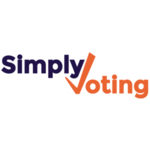List of Best Voting Software
Showing 10 of 20 productsSimpleTexting is a online platform designed to help businesses effectively communicate with their customers through text messaging. With its user-friendly interface and innovative features, SimpleTexting streamlines the process of sending bulk texts,...Read SimpleTexting Reviews
Doodle is a perfect tool for streamlining and simplifying your scheduling and planning needs. With Doodle, managing appointments, meetings, and events becomes a breeze. Say goodbye to the hassle of back-and-forth communication and hello to effortless...Read Doodle Reviews
eBallot, the innovative online voting platform that revolutionizes the election process. Designed for efficiency, transparency, and convenience, eBallot is the modern solution for a fair and accurate voting experience. With advanced security measures...Read eBallot Reviews
Election Runner is a solution for conducting efficient and fair elections. This innovative software simplifies the election process through its user-friendly interface features. From creating custom ballots to tracking results in real-time, Election...Read Election Runner Reviews
VoxVote allows users to engage, interact, and make decisions in real-time with its intuitive and user-friendly platform. Empower your audience by collecting valuable feedback, opinions, and preferences through live polls and surveys. With customizabl...Read VoxVote Reviews
Simply Voting is a online platform for conducting secure is a elections. With its user-friendly interface and state-of-the-art security features, Simply Voting simplifies the voting process for organizations and ensures fair and accurate results. Exp...Read Simply Voting Reviews
OpaVote is a top-ranking online voting platform that simplifies the process of conducting elections and surveys. With its user-friendly interface technology, OpaVote allows organizations and individuals to easily manage and track their voting process...Read OpaVote Reviews
Choice Voting is a user-friendly, efficient software designed to streamline the process of voting. With its intuitive layout features, Choice Voting simplifies decision-making for organizations, clubs, and communities. This innovative tool revolution...Read Choice Voting Reviews
BigPulse is a software solution designed to revolutionize the way companies gather, analyze, and act upon feedback. With its user-friendly interface features, BigPulse empowers organizations to make data-driven decisions with ease. Say goodbye to tra...Read BigPulse Reviews
Vogo, the all-in-one software solution for businesses looking to streamline their operations. With Vogo, you can easily manage your tasks, improve efficiency, and connect with your team seamlessly. Say goodbye to complex systems and hello to a simple...Read Vogo Reviews
- What Is Voting Software?
- Top Reasons Why Businesses Need Voting Software?
- What Are the Top Key Features of Voting Software?
- What Are the Top Benefits of Voting Software?
- What Are the Steps to Choose the Right Voting Software?
- What Are the Types of Voting Software for Different Industries?
- What Are the Technology Trends for Best Voting Software?
- What Are the Deployment Options for Voting Software?
What Is Voting Software?
Voting software refers to a program designed to streamline the process of voting inside an online setting. The utilization of this tool is prevalent throughout diverse contexts, encompassing electoral processes, statistical surveys, and public opinion assessments. The program has been specifically developed with the aim of guaranteeing the precise tabulation of all votes, while also preventing any instances of tampering or fraudulent activities.
Additionally, it facilitates the streamlining of the voting procedure, hence enhancing the ease of establishing, administering, and monitoring voting activities. The software functions by generating an electronic ballot that is subsequently given to the electorate via an internet platform.
Subsequently, voters have the opportunity to cast their ballots via the ballot, after which the software will proceed to calculate and summarize the outcomes. The tally of votes can be conveniently recorded using the program and thereafter transferred to alternative platforms for additional examination.
Voting software presents several advantages as it serves as a substitute for traditional manual paper ballots. The use of this system facilitates the process of aggregating and monitoring votes, while also mitigating the possibility of manipulation or fraudulent activities in the voting process.
The implementation of this system effectively mitigates the potential occurrence of misplaced votes or challenges in the interpretation of ballots. The utilization of software in voting systems offers the advantage of expediting both setup and processing procedures, resulting in swift and precise dissemination of election outcomes, in contrast to the time-consuming nature of manual voting methods.
Top Reasons Why Businesses Need Voting Software?
1. Increased accuracy in the voting process – Voting software employs robust encryption technology to establish secure digital records, thereby ensuring the accuracy and verifiability of the results.
2. Enhances remote voting capabilities – Voting software enables the input, calculation, and dissemination of ballots in distant places, regardless of geographical constraints.
3. Improved voting security – The utilization of top voting software ensures the preservation of the voting process's integrity through the implementation of robust authentication protocols and identity verification functionalities.
4. Increased efficiency of polling – Voting software facilitates the expeditious optimization of the election process, resulting in decreased personnel time demands and improved voter satisfaction.
5. Faster tallies and results – Voting software facilitates expeditious and precise generation of immediate tallies and outcomes in contrast to traditional manual voting techniques.
6. Increased voter engagement – The utilization of the best voting software fosters voter engagement and promotes increased participation through the implementation of an interactive and user-friendly interface.
7. Easy sharing and reporting – Voting software facilitates the convenient dissemination of polls and their corresponding outcomes across all relevant stakeholders through electronic means such as email, text messaging, or other digital platforms.
8. Streamlined data management – Voting software facilitates the efficient organization and management of data through the automation of processes and the simplification of duties.
9. Support multiple languages – Voting software enables organizations to tailor voting polls and ballots to accommodate many languages, thereby augmenting the voting experience for participants.
10. Improved access to polls – Voting software facilitates convenient access to polls and enables individuals to cast their ballots, irrespective of their geographical location or physical constraints.
11. Cost-effective solution – The utilization of voting software in businesses offers long-term cost savings by eliminating the necessity for manual result processing and enhancing the efficiency of the election process as a whole.
12. Create customized voting ballots – Voting software enables enterprises to generate tailored voting ballots that align with their specific voting requirements and preferences.
13. Builds confidence and trust – Voting software plays a crucial role in fostering voter confidence and trust by guaranteeing the integrity, precision, and expediency of election outcomes.
14. Updates on vote tallies – voting software enables organizations to monitor vote outcomes in real time, obviating the need for manual processing and subsequent waiting periods.
15. Automatic voting reminders – The utilization of top voting software that sends automated email or SMS reminders to voters has been found to significantly enhance voter participation rates.
What Are the Top Key Features of Voting Software?
1. Secure Verification: The imperative lies in guaranteeing the secure casting of ballots and their subsequent verification through the utilization of cryptographically robust techniques.
2. Remote Accessibility: Providing the capability for individuals to remotely cast their ballots from any geographical location, as well as granting them the capacity to view and manage their voter profiles.
3. Ballot Integrity: The paramount objective is to guarantee the accurate recording and secure preservation of ballots, accompanied by comprehensive audit trails, while minimizing the potential for tampering or manipulation.
4. Accessibility: By offering users with user interfaces that are intuitive and operations that are easy to comprehend, while also assuring adherence to legal requirements such as the Americans with Disabilities Act.
5. Transparency: Enabling voters to possess comprehensive transparency on the recording and tabulation of their votes.
6. Data Management: Effectively and reliably managing voters' contact information, polling locations, candidate profiles, referendum details, and similar datasets with a focus on maintaining security and accuracy.
7. Reporting: The provision of reporting tools to candidates and election authorities enables them to compile comprehensive reports on election results and other related outcomes at their convenience.
8. Fraud Detection: Applying sophisticated analytics techniques to identify probable instances of voter fraud.
9. Continuity Planning: Implementing automated protocols to guarantee the uninterrupted functioning of operations in the occurrence of power failure or disruptions in the network.
10. Scalability: One of the key objectives is to guarantee that the voting system is capable of effectively managing substantial quantities of data, users, and votes without experiencing any decline in performance.
What Are the Top Benefits of Voting Software?
1. Increased Efficiency: Voting software facilitates expedited and precise tabulation, obviating the necessity for manual enumeration and the concomitant potential for human fallibility.
2. Increased Transparency: The best voting software facilitates the provision of real-time results that can be monitored, hence enhancing the level of transparency in elections.
3. Improved Accessibility: Voting software has the potential to facilitate remote voting, so enabling individuals who are unable to physically travel to polling stations to actively engage in the electoral process.
4. Reduced Costs: The utilization of top voting software obviates the necessity for manual supervision of ballots, hence yielding financial savings for governmental entities.
5. Expanded Voter Participation: Voting software facilitates the convenient casting of ballots by citizens from the comfort of their residences, hence enhancing voter engagement and inclusivity.
6. Improved Security: Voting software facilitates the creation of digital audit trails, so preserving the integrity, confidentiality, and verifiability of digital voting processes while maintaining the anonymity of voters.
7. Automated Election Results: Voting software has the capability to generate automatic voting tallies and conduct analysis, thereby producing accurate representations of election outcomes.
What Are the Steps to Choose the Right Voting Software?
1. Please identify the necessary features required in a voting program. When evaluating the suitability of a system, it is important to take into account various variables, including accessibility, security, scalability, affordability, ease of use, and amount of customization.
2. Conduct an investigation into the many forms of top voting software that are now available in the market. Evaluate the characteristics and conduct a comparative analysis using the predetermined set of criteria in order to determine which alternatives most effectively align with your specific demands.
3. It is imperative to verify the compliance of the voting software with pertinent state or national regulations.
4. Conduct a comprehensive examination of the financial implications associated with the software, and determine its compatibility with your allocated budgetary resources.
5. Contact the sellers and inquire about any inquiries you may have regarding their product.
6. In order to ensure the functionality of the best voting software aligns with your requirements, it is imperative to do thorough testing.
7. It is imperative to thoroughly peruse and comprehend the terms and conditions outlined by the provider.
8. In order to conclude the decision-making process, it is imperative to carefully evaluate and choose the most suitable voting software that aligns with your specific requirements.
What Are the Types of Voting Software for Different Industries?
The selection of the best voting software across many industries is contingent upon contextual factors pertaining to the voting process, alongside the desired level of security and data protection.
Common types of voting software for different industries include:
1. Online Voting Systems: These systems are utilized in the context of online voting scenarios. Certain alternatives may provide voters with the ability to exercise their voting rights remotely through a web browser, irrespective of their location.
Conversely, alternative methods may necessitate voters to be physically present at a designated machine in order to cast their vote. The majority of online voting systems are meticulously constructed to prioritize security, ensuring that voters may exercise their right to vote without the risk of their identities being compromised.
2. Distributed Voting Systems: These technologies are commonly employed to streamline the voting process inside expansive entities such as corporations, governmental bodies, and educational institutions. Instead of processing each vote individually, these systems frequently aggregate votes into a bigger, distributed ballot.
This mechanism guarantees that every voter exercises an equal number of votes, hence preventing any individual vote from exerting a disproportionate impact.
3. Mobile Voting Systems: These technologies are designed to be utilized in many scenarios that necessitate mobile accessibility. This may encompass participating in electoral processes or surveys, or actively participating in immersive educational activities.
Mobile voting systems commonly function using one of two operational methods. Two methods commonly employed for enabling voting using mobile devices include secure SMS, which involves the use of text messages, and mobile apps designed specifically for casting votes.
4. Image-based Voting Systems: The present voting system has been specifically developed to incorporate visual elements within the voting procedure.
This functionality has the potential to be applied in systems wherein candidates or themes are visually represented, or to facilitate voters in expressing their choices through the recognition of hand-drawn shapes or handwritten selections. These approaches are frequently employed in very specialized and narrow voting contexts.
What Are the Technology Trends for Best Voting Software?
There are many technology trends for best voting software.
They include:
1. Increased Security: In order to guarantee that exclusively allowed votes are cast and counted, it is imperative to employ encryption and authentication techniques that are at the forefront of technological advancements.
2. Big Data Analytics: Emerging analytics technologies are playing a pivotal role in enhancing the level of information available for the creation of voting software. The collected data has the ability to be utilized for the purpose of monitoring patterns and discerning possible risks.
3. Cloud-Based Solutions: The utilization of cloud-based voting software has the potential to effectively mitigate expenses, while offering a safe and user-friendly platform for electoral processes.
4. Accessible Design: The compatibility of top voting software with diverse user profiles is of utmost significance. This encompasses provisions for those with impairments to ensure equal access and opportunities.
5. Legislation Consistency: The creation and maintenance of voting software must adhere to rigorous standards and procedures across several countries.
6. Improved Transparency: The importance of transparency cannot be overstated in the context of elections. Voting software must to possess the capability to facilitate the monitoring of outcomes and voting behavior in a convenient manner.
7. Scalability: In the context of a dynamic political environment, it is imperative for voting software to possess the capability to adjust to evolving circumstances and varying levels of voter participation.
8. User Experience: The design of voting software should prioritize an intuitive user interface and user experience, enabling users to readily engage in electoral processes.
What Are the Deployment Options for Voting Software?
Voting software deployment choices often encompass on-premises, cloud-based, or hybrid systems.
1. On-premises solutions refer to the deployment of software on hardware infrastructure that is owned and managed by the company within its physical premises.
2. Cloud solutions refer to the deployment of software on network-accessible hardware, which is owned and maintained by a third-party provider.
3. Hybrid solutions encompass the integration of both on-premises and cloud-based technologies. Irrespective of the chosen deployment choice, it is imperative that all best voting software conforms to the relevant security and privacy legislation.
Security measures encompass a range of strategies, such as encryption, role-based access control, and secure remote access methods. It is imperative that the software is meticulously constructed to guarantee the inviolability and unalterability of votes.










